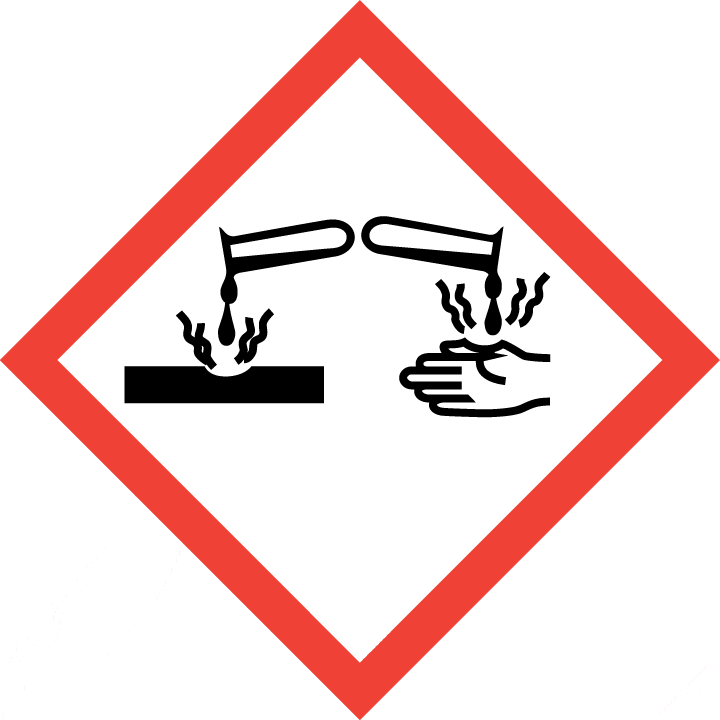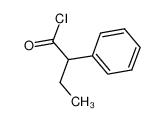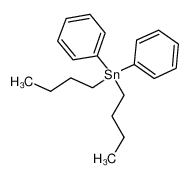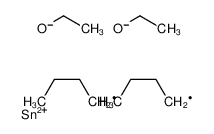| Product name | Dibutyltin dichloride |
|---|
| Product number | - |
|---|---|
| Other names | dibutyl(dichloro)stannane |
| Identified uses | For industry use only. Intermediates,Ion exchange agents,Process regulators,Processing aids, not otherwise listed |
|---|---|
| Uses advised against | no data available |
| Company | MOLBASE (Shanghai) Biotechnology Co., Ltd. |
|---|---|
| Address | Floor 4 & 5, Building 12, No. 1001 North Qinzhou Road, Xuhui District, Shanghai, China |
| Telephone | +86(21)64956998 |
| Fax | +86(21)54365166 |
| Emergency phone number | +86-400-6021-666 |
|---|---|
| Service hours | Monday to Friday, 9am-5pm (Standard time zone: UTC/GMT +8 hours). |
Acute toxicity - Oral, Category 3
Acute toxicity - Dermal, Category 4
Skin corrosion, Category 1B
Acute toxicity - Inhalation, Category 2
Germ cell mutagenicity, Category 2
Specific target organ toxicity – repeated exposure, Category 1
Hazardous to the aquatic environment, short-term (Acute) - Category Acute 1
Hazardous to the aquatic environment, long-term (Chronic) - Category Chronic 1
Reproductive toxicity, Category 1B
2.2 GHS label elements, including precautionary statements| Pictogram(s) |     |
|---|---|
| Signal word | Danger |
| Hazard statement(s) | H301 Toxic if swallowed H312 Harmful in contact with skin H314 Causes severe skin burns and eye damage H330 Fatal if inhaled H341 Suspected of causing genetic defects H372 Causes damage to organs through prolonged or repeated exposure H410 Very toxic to aquatic life with long lasting effects H360FD |
| Precautionary statement(s) | |
| Prevention | P264 Wash ... thoroughly after handling. P270 Do not eat, drink or smoke when using this product. P280 Wear protective gloves/protective clothing/eye protection/face protection. P260 Do not breathe dust/fume/gas/mist/vapours/spray. P271 Use only outdoors or in a well-ventilated area. P284 [In case of inadequate ventilation] wear respiratory protection. P201 Obtain special instructions before use. P202 Do not handle until all safety precautions have been read and understood. P273 Avoid release to the environment. |
| Response | P301+P310 IF SWALLOWED: Immediately call a POISON CENTER/doctor/… P321 Specific treatment (see ... on this label). P330 Rinse mouth. P302+P352 IF ON SKIN: Wash with plenty of water/... P312 Call a POISON CENTER/doctor/…if you feel unwell. P362+P364 Take off contaminated clothing and wash it before reuse. P301+P330+P331 IF SWALLOWED: Rinse mouth. Do NOT induce vomiting. P303+P361+P353 IF ON SKIN (or hair): Take off immediately all contaminated clothing. Rinse skin with water [or shower]. P363 Wash contaminated clothing before reuse. P304+P340 IF INHALED: Remove person to fresh air and keep comfortable for breathing. P310 Immediately call a POISON CENTER/doctor/… P305+P351+P338 IF IN EYES: Rinse cautiously with water for several minutes. Remove contact lenses, if present and easy to do. Continue rinsing. P320 Specific treatment is urgent (see ... on this label). P308+P313 IF exposed or concerned: Get medical advice/ attention. P314 Get medical advice/attention if you feel unwell. P391 Collect spillage. |
| Storage | P405 Store locked up. P403+P233 Store in a well-ventilated place. Keep container tightly closed. |
| Disposal | P501 Dispose of contents/container to ... |
none
3.Composition/information on ingredients 3.1 Substances| Chemical name | Common names and synonyms | CAS number | EC number | Concentration |
|---|---|---|---|---|
| Dibutyltin dichloride | Dibutyltin dichloride | 683-18-1 | none | 100% |
Consult a physician. Show this safety data sheet to the doctor in attendance.
If inhaledIf breathed in, move person into fresh air. If not breathing, give artificial respiration. Consult a physician.
In case of skin contactWash off with soap and plenty of water. Consult a physician.
In case of eye contactRinse thoroughly with plenty of water for at least 15 minutes and consult a physician.
If swallowedNever give anything by mouth to an unconscious person. Rinse mouth with water. Consult a physician.
4.2 Most important symptoms/effects, acute and delayedno data available
4.3 Indication of immediate medical attention and special treatment needed, if necessary Absorption, Distribution and ExcretionWITHIN 1 HR AFTER IV INJECTION OF 20 UMOL DIBUTYLTIN DICHLORIDE, RATS EXCRETED IN THE BILE 2X10-5 MOL ORGANOTIN/L. THE BILE/PLASMA QUOTIENT WAS 151:1 WHICH INDICATES AN ACTIVE TRANSPORT OF DIBUTYLTIN CHLORIDE FROM LIVER TO THE BILE. BIOTRANSFORMATION WAS NOT INVOLVED IN THE EXCRETION.
5.Fire-fighting measures 5.1 Extinguishing media Suitable extinguishing mediaTo fight fire, use water, foam, CO2, dry chemical.
5.2 Specific hazards arising from the chemicalno data available
5.3 Special protective actions for fire-fightersWear self-contained breathing apparatus for firefighting if necessary.
6.Accidental release measures 6.1 Personal precautions, protective equipment and emergency proceduresUse personal protective equipment. Avoid dust formation. Avoid breathing vapours, mist or gas. Ensure adequate ventilation. Evacuate personnel to safe areas. Avoid breathing dust. For personal protection see section 8.
6.2 Environmental precautionsPrevent further leakage or spillage if safe to do so. Do not let product enter drains. Discharge into the environment must be avoided.
6.3 Methods and materials for containment and cleaning upPick up and arrange disposal. Sweep up and shovel. Keep in suitable, closed containers for disposal.
7.Handling and storage 7.1 Precautions for safe handlingAvoid contact with skin and eyes. Avoid formation of dust and aerosols. Avoid exposure - obtain special instructions before use.Provide appropriate exhaust ventilation at places where dust is formed. For precautions see section 2.2.
7.2 Conditions for safe storage, including any incompatibilitiesStore in cool place. Keep container tightly closed in a dry and well-ventilated place.
8.Exposure controls/personal protection 8.1 Control parameters Occupational Exposure limit valuesno data available
Biological limit valuesno data available
8.2 Appropriate engineering controlsHandle in accordance with good industrial hygiene and safety practice. Wash hands before breaks and at the end of workday.
8.3 Individual protection measures, such as personal protective equipment (PPE) Eye/face protectionSafety glasses with side-shields conforming to EN166. Use equipment for eye protection tested and approved under appropriate government standards such as NIOSH (US) or EN 166(EU).
Skin protectionWear impervious clothing. The type of protective equipment must be selected according to the concentration and amount of the dangerous substance at the specific workplace. Handle with gloves. Gloves must be inspected prior to use. Use proper glove removal technique(without touching glove's outer surface) to avoid skin contact with this product. Dispose of contaminated gloves after use in accordance with applicable laws and good laboratory practices. Wash and dry hands. The selected protective gloves have to satisfy the specifications of EU Directive 89/686/EEC and the standard EN 374 derived from it.
Respiratory protectionWear dust mask when handling large quantities.
Thermal hazardsno data available
9.Physical and chemical properties| Physical state | White Crystalline Liquid |
|---|---|
| Colour | White crystalline solid |
| Odour | no data available |
| Melting point/ freezing point | 39-41ºC |
| Boiling point or initial boiling point and boiling range | 135°C/10mmHg(lit.) |
| Flammability | no data available |
| Lower and upper explosion limit / flammability limit | no data available |
| Flash point | 113°C |
| Auto-ignition temperature | no data available |
| Decomposition temperature | no data available |
| pH | no data available |
| Kinematic viscosity | no data available |
| Solubility | In water:320 mg/L, hydrolises in hot water |
| Partition coefficient n-octanol/water (log value) | log Kow=0.97 |
| Vapour pressure | 2 mm Hg at 100°C |
| Density and/or relative density | 1.4 |
| Relative vapour density | 10.5 (Air = 1) |
| Particle characteristics | no data available |
no data available
10.2 Chemical stabilityStable under recommended storage conditions.
10.3 Possibility of hazardous reactionsCombustible when exposed to heat or flame. ... Can react vigorously with oxidizing materials.
10.4 Conditions to avoidno data available
10.5 Incompatible materials... Will react with water or steam to produce heat and toxic fumes; can react vigorously with oxidizing materials.
10.6 Hazardous decomposition productsDECOMP BY HOT & COLD WATER, DECOMP AT 113.6 DEG C, 60 MM HG
11.Toxicological information Acute toxicity- Oral: LD50 White mouse oral 35 mg/kg
- Inhalation: no data available
- Dermal: no data available
no data available
Serious eye damage/irritationno data available
Respiratory or skin sensitizationno data available
Germ cell mutagenicityno data available
CarcinogenicityA4; Not classifiable as a human carcinogen. /Tin, organic cmpd, as Sn/
Reproductive toxicityno data available
STOT-single exposureno data available
STOT-repeated exposureno data available
Aspiration hazardno data available
12.Ecological information 12.1 Toxicity- Toxicity to fish: no data available
- Toxicity to daphnia and other aquatic invertebrates: no data available
- Toxicity to algae: no data available
- Toxicity to microorganisms: no data available
Tributyltin species, obtained by dissolution of tributyltin oxide in water, are sequentially degraded by microorganisms to dibutyltin, monobutyltin (similar to the monobutyltin obtained by dissolution of mono-n-butyltin trichloride), and finally to inorganic tin using water/sediment mixtures or water alone from Tornoto Harbor, Canada(1). Butyltin compounds may be susceptible to biomethylation based upon the possible biomethylation of dibutyltin and tributyltin compounds(1).
12.3 Bioaccumulative potentialThe observed BCF for dibutyltin dichloride in round crucian carp (Carassius carassius grandoculis) muscle, vertebra, liver, and kidney tissue were 12, 46, 135, and 61, respectively(2). In a tin bioconcentration study, the freshwater clam, Anodonta anatina, was exposed to dibutyltin dichloride for 7 months at a total concn of 15 ug tin equivalents/liter(2). Only total tin concn were determined(2). The average concn of tin in the gills, mantle plus mantle-edge, midgut gland, kidney, and remaining tissue fraction were as follows: 0.94, 0.13, 0.22, 0.60, 23.5, and 0.56 ug Sn/g wet wt, respectively(2). The max BCF for dibutyltin dichloride for the tissues are as follows (if all of the tin in the clams was in this form): 63, 8.6, 15, 40, 1,567, and 37, respectively(2). According to a classification scheme(2), a BCF value of 12 suggests bioconcentration in aquatic organisms is low(SRC).
12.4 Mobility in soilDibutyltin dichloride is expected to dissociate in water forming the cation, dibutyltin(SRC). Cations generally adsorb to organic carbon and clay(SRC). The adsorption of dibutyltin dichloride was studied under simulated estuarine conditions which included artificial seawater (salinity(S)), hydrous iron oxide (moderately particulate matter (PM)), and fulvic acid(1). The partition coefficients Kp (ug/kg)/ug/l) ranged from zero (no adsortion at pH 8.2 and with low S and high PM concn or high S and low PM concn) to 110,000 (at pH 6.2 and high S and low PM concn)(1). Based upon these results, dibutyltin dichloride is expected to exist mainly in the solution (aqueous) phase in estuarine waters and seawater(1). In a study of desorption from sediment, approximately 1% of the initial dibutyltin species was observed to desorb from the unshaken Toronto Harbor sediment/water mixtures in 10.6 months(2).
12.5 Other adverse effectsno data available
13.Disposal considerations 13.1 Disposal methods ProductThe material can be disposed of by removal to a licensed chemical destruction plant or by controlled incineration with flue gas scrubbing. Do not contaminate water, foodstuffs, feed or seed by storage or disposal. Do not discharge to sewer systems.
Contaminated packagingContainers can be triply rinsed (or equivalent) and offered for recycling or reconditioning. Alternatively, the packaging can be punctured to make it unusable for other purposes and then be disposed of in a sanitary landfill. Controlled incineration with flue gas scrubbing is possible for combustible packaging materials.
14.Transport information 14.1 UN Number| ADR/RID: UN3146 | IMDG: UN3146 | IATA: UN3146 |
| ADR/RID: ORGANOTIN COMPOUND, SOLID, N.O.S. |
| IMDG: ORGANOTIN COMPOUND, SOLID, N.O.S. |
| IATA: ORGANOTIN COMPOUND, SOLID, N.O.S. |
| ADR/RID: 6 | IMDG: 6 | IATA: 6 |
| ADR/RID: II | IMDG: II | IATA: II |
| ADR/RID: yes | IMDG: yes | IATA: yes |
no data available
14.7 Transport in bulk according to Annex II of MARPOL 73/78 and the IBC Codeno data available
15.Regulatory information 15.1 Safety, health and environmental regulations specific for the product in question| Chemical name | Common names and synonyms | CAS number | EC number |
|---|---|---|---|
| Dibutyltin dichloride | Dibutyltin dichloride | 683-18-1 | none |
| European Inventory of Existing Commercial Chemical Substances (EINECS) | Listed. | ||
| EC Inventory | Listed. | ||
| United States Toxic Substances Control Act (TSCA) Inventory | Listed. | ||
| China Catalog of Hazardous chemicals 2015 | Listed. | ||
| New Zealand Inventory of Chemicals (NZIoC) | Listed. | ||
| Philippines Inventory of Chemicals and Chemical Substances (PICCS) | Listed. | ||
| Vietnam National Chemical Inventory | Listed. | ||
| Chinese Chemical Inventory of Existing Chemical Substances (China IECSC) | Listed. | ||
| Creation Date | Aug 16, 2017 |
|---|---|
| Revision Date | Aug 16, 2017 |
- CAS: Chemical Abstracts Service
- ADR: European Agreement concerning the International Carriage of Dangerous Goods by Road
- RID: Regulation concerning the International Carriage of Dangerous Goods by Rail
- IMDG: International Maritime Dangerous Goods
- IATA: International Air Transportation Association
- TWA: Time Weighted Average
- STEL: Short term exposure limit
- LC50: Lethal Concentration 50%
- LD50: Lethal Dose 50%
- EC50: Effective Concentration 50%
- IPCS - The International Chemical Safety Cards (ICSC), website: http://www.ilo.org/dyn/icsc/showcard.home
- HSDB - Hazardous Substances Data Bank, website: https://toxnet.nlm.nih.gov/newtoxnet/hsdb.htm
- IARC - International Agency for Research on Cancer, website: http://www.iarc.fr/
- eChemPortal - The Global Portal to Information on Chemical Substances by OECD, website: http://www.echemportal.org/echemportal/index?pageID=0&request_locale=en
- CAMEO Chemicals, website: http://cameochemicals.noaa.gov/search/simple
- ChemIDplus, website: http://chem.sis.nlm.nih.gov/chemidplus/chemidlite.jsp
- ERG - Emergency Response Guidebook by U.S. Department of Transportation, website: http://www.phmsa.dot.gov/hazmat/library/erg
- Germany GESTIS-database on hazard substance, website: http://www.dguv.de/ifa/gestis/gestis-stoffdatenbank/index-2.jsp
- ECHA - European Chemicals Agency, website: https://echa.europa.eu/

































